SmithWorks Extreme Range 3.0 and Elite 3.0 Wedges Review
Ever since I took up golf, there is one shot that I have been enamored with, the wedge shot that just sticks like Velcro. There is no denying that at times I have chased it, and I don’t think I am alone in that camp. Admittedly, as I have improved and learned more about wedges, I don’t seek it out as much because it now becomes too much at times. However, that certainly doesn’t take away from just how fun it is to see. Introducing SmithWorks Extreme Range 3.0 and Elite 3.0 wedges.
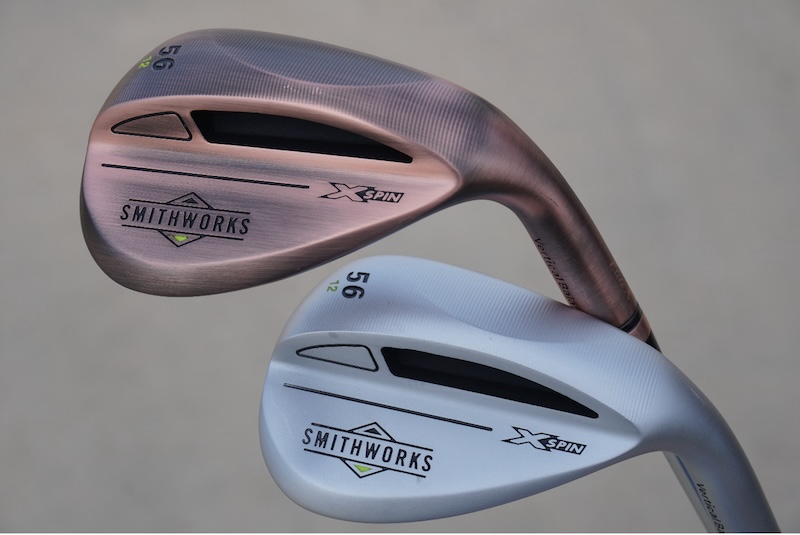
SmithWorks golf is a brand that wants to put the fun and function back into the short game, and are willing to create both conforming, and non-conforming, wedges to do just that. THP was sent both the 54-degree and 56-degree wedges in both orientations to put to the test. How did it turn out? Read on to see.
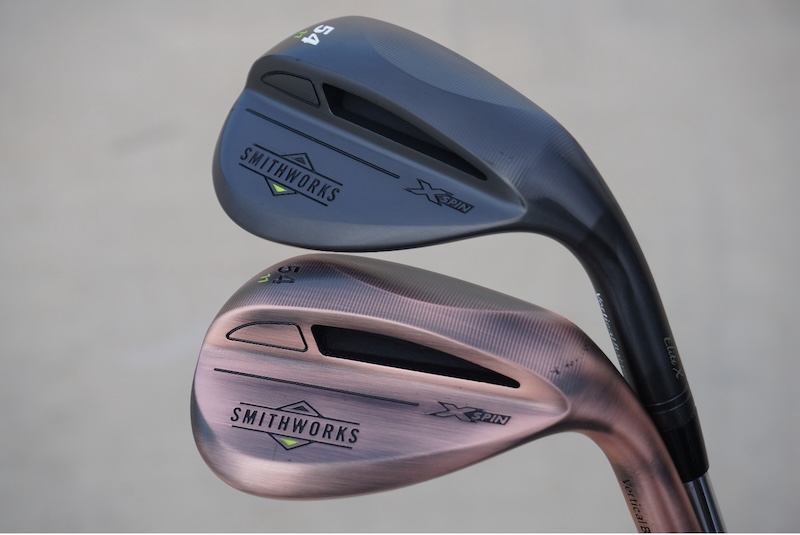
Quick Take
There is certainly a lot going on visually with the SmithWorks Extreme Range wedges from the slightly industrial shaping to the full-face grooves with their “X” pattern between them. However, the quality of finish stands tall, as does the function. They both perform, but each model excels in areas you both expect, and might not.
Who are SmithWorks?
SmithWorks was founded by Stuart Smith, a PGA Professional with over thirty years in and around the industry with brands like MD Golf, Seve Wedges, and TaylorMade. As for pedigree, he has worked with some of the greatest to ever play the game including Nick Faldo and Severiano Ballesteros.
The reason for founding SmithWorks was in their words, to bring fun back to the short game while bridging the gap between Tour and amateur golfers. A major part of that is addressing that the groove rule changes were aimed at 0.5% of golfers, so by offering both conforming and non-conforming wedges, amateurs have an opportunity to put more fun back in their short game. At the same time the brand is adamant that both of their wedge options cut no corners and utilize all the technology possible beyond just the groove types.
SmithWorks Extreme Range 3.0 and Elite 3.0 Wedges
As mentioned earlier, THP received both versions of the current 3.0 SmithWorks Extreme Range wedges for review, and that includes each face design in both 54-degree and 56-degrees. Upon unboxing, I have to say, there was a lot going on. Initially, I saw some similarities to my eye of the original Hi-Toe from TaylorMade, but with a much more tech forward shaping where it comes to mass manipulation.
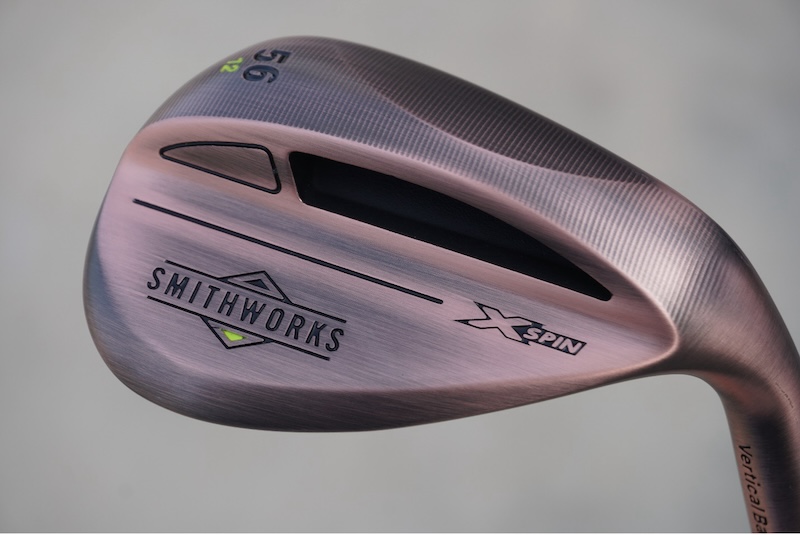
The overall shaping at setup is very clean in both wedges, the leading edge is sightly rounded but not what I consider overly aggressive. The soles are fully milled into a somewhat wider sole that in the 54 and 56 have a very aggressive C-Grind on them, though the width aims to keep playability. The C is present in the sand and lob wedge lofts, while the gap options seem to have more of an S/M grind blend to them, but that is based purely on pictures since we didn’t get those options in-hand.
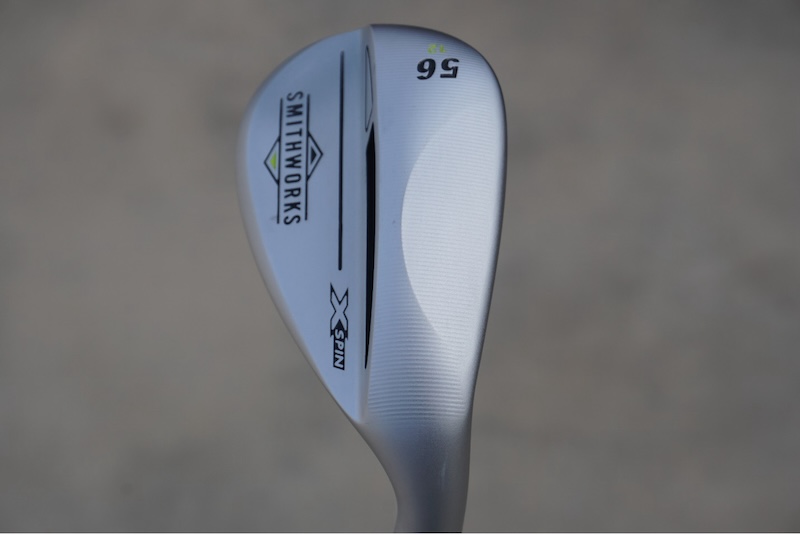
Along with that higher looking toe and full face grooves to increase the striking area for amateurs, is a “progressive weight cavity” on the back flange of the wedges that helps shift the center of gravity away from the heel and more to the middle of the club, a story we know well. Along with that, the weight is optimized for each loft to keep trajectories in check. The savings in the cavity let them apply a thicker weight pad near the topline that gives the wedge a look verysimilar to what Mizuno is doing in their T-Series. All of that is tied together with three finishes, “Stealth Black”, “Brushed Copper”, and “Frozen Satin”. The finishes are some of the best I have seen in any wedge out there, and kudos to SmithWorks for making options like this possible.
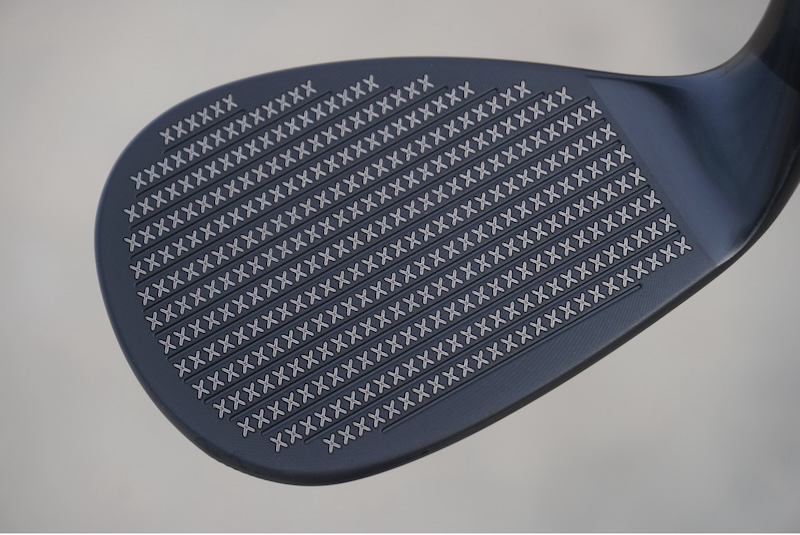
The difference in the two cast Chromium Nickel wedge lines is, of course, the face. The Elite 3.0 wedges feature conforming grooves with “X-Spin Laser Milled” X’s between the grooves to add friction. The faces are also finished with a ceramic blast to add durability. The Extreme Range 3.0’s on the other hand have one of the wildest wedge faces I have ever seen with the “X’s” actually cast into the wedge face between the grooves, hence their non-conforming status.

So, what is the difference when put into play? Well, it might surprise you.
Smithworks Extreme Data and Performance
More than likely, you looked at the above pictures and said to yourself, those (Extreme Range 3.0) are going to shred golf ball covers. You would be right, in testing I sacrificed a great many premium golf balls for this review, though the results weren’t quite as cut and dry as you might expect.

When it came to the touch shots, I put the wedges to work both from 10 and 25 yards. On the course, you could see the difference into the surface with the non-conforming Extreme Range 3.0 54 and 56. Off of clean lies the conforming Elite 3.0 held their own, but the second you got into thicker lies, bunkers, or moisture, those crazy looking cast X’s on the Extreme led the way. Frankly, there were some absolutely laughable shots I hit with them, even as someone who doesn’t struggle to stop a wedge anymore.
| CLUB | TARGET | BALL SPEED | LAUNCH | SPIN | CARRY | TOTAL | HEIGHT |
| 54.11 Extreme Range 3.0 | 10Y | 25 | 29 | 3032 | 12 | 13 | 2Y |
| 54.11 Elite 3.0 | 10Y | 26 | 28 | 2787 | 12 | 13 | 1Y |
| CLUB | TARGET | BALL SPEED | LAUNCH | SPIN | CARRY | TOTAL | HEIGHT |
| 54.11 Extreme Range 3.0 | 25Y | 40 | 26 | 5043 | 28 | 29 | 4Y |
| 54.11 Elite 3.0 | 25Y | 39 | 25 | 4080 | 26 | 28 | 3Y |
| CLUB | TARGET | BALL SPEED | LAUNCH | SPIN | CARRY | TOTAL | HEIGHT |
| 56.12 Extreme Range 3.0 | 10Y | 24 | 27 | 3418 | 11 | 11 | 1Y |
| 56.12 Elite 3.0 | 10Y | 23 | 28 | 2551 | 9 | 10 | 1Y |
| CLUB | TARGET | BALL SPEED | LAUNCH | SPIN | CARRY | TOTAL | HEIGHT |
| 56.12 Extreme Range 3.0 | 25Y | 38 | 25 | 5033 | 26 | 26 | 3Y |
| 56.12 Elite 3.0 | 25Y | 37 | 28 | 3675 | 25 | 26 | 3Y |
The data above was recorded off a mat, and thus the debris funneling aspect was neutralized. As you can see, in the 10 shot averages the non-conforming Extreme wedges still did what you would expect them to by offering a good deal more spin given the short distance of those touch shots. Any time you can hit a 10 or 25 yard shot and have it sit where it carried, you can now have a whole lot of fun.
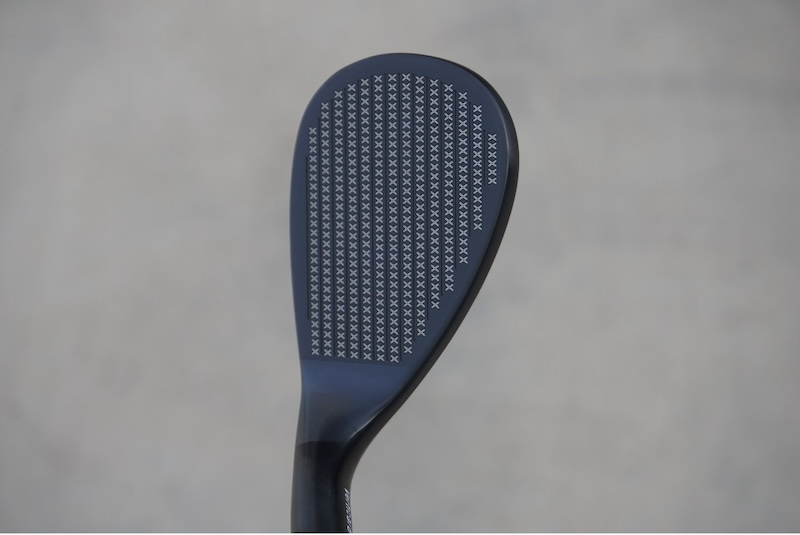
However, when I moved to longer swings, things sort of broke my mind. When you look at the data below, you will see why I was borderline shocked at the results of the 10 shot sets, so much so that I re-recorded them four times to make sure I wasn’t seeing things. The conforming Elite 3.0 spun a ton more for me than the Extreme did.
| CLUB | TARGET | BALL SPEED | LAUNCH | SPIN | CARRY | TOTAL | HEIGHT |
| 54.11 Extreme Range 3.0 | 80Y | 70 | 29 | 6045 | 81 | 82 | 15Y |
| 54.11 Elite 3.0 | 80Y | 71 | 27 | 7227 | 82 | 82 | 15Y |
| CLUB | TARGET | BALL SPEED | LAUNCH | SPIN | CARRY | TOTAL | HEIGHT |
| 54.11 Extreme Range 3.0 | FULL | 93 | 29 | 7697 | 115 | 116 | 29Y |
| 54.11 Elite 3.0 | FULL | 93 | 27 | 9144 | 116 | 116 | 28Y |
| CLUB | TARGET | BALL SPEED | LAUNCH | SPIN | CARRY | TOTAL | HEIGHT |
| 56.12 Extreme Range 3.0 | 80Y | 70 | 30 | 6098 | 81 | 82 | 16Y |
| 56.12 Elite 3.0 | 80Y | 71 | 27 | 8051 | 82 | 82 | 15Y |
| CLUB | TARGET | BALL SPEED | LAUNCH | SPIN | CARRY | TOTAL | HEIGHT |
| 56.12 Extreme Range 3.0 | FULL | 93 | 30 | 7439 | 114 | 115 | 30Y |
| 56.12 Elite 3.0 | FULL | 94 | 27 | 9856 | 114 | 113 | 29Y |
Why did this happen? Well, that took me a minute to realize, but it comes back to the speed of the swings. You see, at higher speeds the deep cast X’s definitely shredded the covers of the urethane golf balls, but that was it, one hard grab and done. While on the Elite 3.0’s the conforming roughness between the grooves allowed the cover to grab instead of shred and made for more efficient spin generation.

Both wedges were still playable on the course, but the launch monitor confirmed for me that other than in touch swings, it sure seems like wedge groove and face design has surpassed the groove rule. The other thing of note is looking at the launch of the two styles, you will see that the Extreme 3.0’s launched higher and hit higher peaks, but they also feel heavier. Part of that is likely the CG placement, but when I swing weighted the two different lies I did notice that in both the 54 and 56 the Extreme was 1 point heavier than the Elite.
The Details – SmithWorks Extreme Range
What does it all mean? In my opinion, SmithWorks has two options for two totally different wants and needs. The face on the Extreme Range will give superior spin on touch and debris funneling that will appeal to amateurs looking to maximize fun while the Elite sacrifices nothing for better players or those wanting to stay conforming. Golf is meant to be fun, and props to SmithWorks for living by that mantra.
The SmithWorks wedges are available from 48 to 60 degrees (in two degree increments) with a price of $174. They can be found directly at www.smithworksgolf.com.












Fun read. Visually, the Xs in between grooves seems a bit distracting. And on the non-conforming, I am wondering about the impact of debris getting in there and being tougher to keep clean. Sounds like the conforming for full swings and non-conforming for around the greens would be fun to try. I do play a lot of club events so non-conforming aspect would limit its use for me.
I’ve been waiting to read this one. Time to dig in.
This was very interesting – well done [USER=1579]@Jman[/USER] ! I’ve had unexpected things occur like that and it can make you question everything except the club at first. Kudos for sticking with it and verifying your results.
In terms of looks, I’m liking everything until the face shows up. Just not a huge fan of such an unusual looking groove pattern, but the shape is nice. Finishes are spectacular.
I was surprised, as I know you were, to see the difference in spin once you started getting into longer swings. Great job at figuring out what was going on. I think you are right that once you get some grass between the ball and the face that things may look different.
In terms of spin in general (let’s take the Elite for example), is that a typical amount of spin for you to see? I guess I expected to see even a bit more than 7k/8k on those 80 yard shots.
Started out how I expected. But then changed. I expected the full swings to be more similar and flatten out as speed increased..
Man, at first glance, these definitely look like a TaylorMafde wedge.
Great read. I was close on estimates of spin on short shots but way off on full shots. Once you explain it I can see the reasoning. Guessing this was a fun experiment. Love the copper
[QUOTE=”BriMac, post: 12229494, member: 44854″]
Fun read. Visually, the Xs in between grooves seems a bit distracting. And on the non-conforming, I am wondering about the impact of debris getting in there and being tougher to keep clean. Sounds like the conforming for full swings and non-conforming for around the greens would be fun to try. I do play a lot of club events so non-conforming aspect would limit its use for me.
[/QUOTE]
The X’s are large enough a brush or towel takes care of cleaning them just like standard grooves.
I’ve seen this on my instagram feed for a while and my main question was are they conforming or not, as it’s not clearly laid out on their site or the ads. So thanks for clearing that up.
[USER=1579]@Jman[/USER] – This was one of the more interesting things I have read in recent memory.
I will admit I was shocked to see the results on more full swings regarding spin, but your explanation makes sense.
Thanks for doing this testing – I will say those ‘Xs’ IN the face look wild.
[USER=1579]@Jman[/USER] Nice Write up.
Think you will put either one in the bag for a while?
Be fun to take a flyer on the Extreme Range 3.0 for Winter work at the Sim or a Dome.
Tried to read on my phone this morning and there was too much there to take in so waited till I got into the office. First great write up as usual, and applaud the fact that you re-recorded data after seeing unexpected results- Kudos for that.
I have to say that the finishes in the close up pics looks really well done, and when first reading about the X’s between the grooves I thought it would be too busy, but I don’t really think it is in the photographs. I like the fact that they are giving us more options, even if they are ones that are non-conforming. As someone who loves seeing a ball one hop stop, or zip back a little bit but not really being able to do it on command, this sounds like a bit of fun to be had.
[QUOTE=”Iceman!, post: 12229638, member: 32688″]
[USER=1579]@Jman[/USER] Nice Write up.
Think you will put either one in the bag for a while?
Be fun to take a flyer on the Extreme Range 3.0 for Winter work at the Sim or a Dome.
[/QUOTE]
Not as a gamer, but one of the main reasons is they’re not the type of grinds I prefer.
The spin differences wouldn’t dissuade you? Do you get to practice pitches and chips in the dome?
[QUOTE=”Jman, post: 12229658, member: 1579″]
Not as a gamer, but one of the main reasons is they’re not the type of grinds I prefer.
The spin differences wouldn’t dissuade you? Do you get to practice pitches and chips in the dome?
[/QUOTE]
My dome is only 70 yards and most times, I work on hitting baskets 20/40/60 yard range.
[QUOTE=”Templet0n, post: 12229554, member: 53139″]
Started out how I expected. But then changed. I expected the full swings to be more similar and flatten out as speed increased..
[/QUOTE]
I agree, that’s what I expected, but it didn’t work out that way over hundreds of shots and re-testing.
I do believe I cracked the code of why what was expected, wasn’t seen though.
I”m actually shocked at some of the results. First I’m suprised it was such a large difference in on the shorter shots. I am stunned by the full swing results with the conforming wedge spinning more. I never dreamed that would be the case.
[QUOTE=”Slowmo, post: 12229749, member: 67660″]
I”m actually shocked at some of the results. First I’m suprised it was such a large difference in on the shorter shots. I am stunned by the full swing results with the conforming wedge spinning more. I never dreamed that would be the case.
[/QUOTE]
You’re not alone. But, I think its a GREAT case study of how much friction matters in relation to activating the grooves as the ball moves up the face, where the added cast X’s simply help take an initial bite with no elongsted friction time.
It also makes one realize that companies have surpassed the groove rule by innovating. So the USGA looks foolish again haha
[QUOTE=”Jman, post: 12229748, member: 1579″]
I agree, that’s what I expected, but it didn’t work out that way over hundreds of shots and re-testing.
I do believe I cracked the code of why what was expected, wasn’t seen though.
[/QUOTE]
I wonder if that would change outside? Or with moister?
this was a real cool review and I like that you did it again because of how different the results were from what you expected. And also, another reminder about how annoying the rule changes for the .5% that impact the 99.5%. Drives me nuts lol
[QUOTE=”Templet0n, post: 12229766, member: 53139″]
I wonder if that would change outside? Or with moister?
[/QUOTE]
When debris was involved the gap in touch shots got larger while things equalized in longer swings, not entirely, but close enough. Obviously the thicker the rough the better the funneling form the Extreme, but there’s still in my opinion a friction factor it doesn’t overcome.
I spent a LONG time banging my head against the wall on this one and re-testing both the results and my hypothesis. I’m guessing, and it’s solely a guess on my end, that perhaps the grooves aren’t what’s non-conforming, but instead it’s simply the cast X’s. There’s no true clarity there other than they will not submit the Extreme to the governing bodies.
[QUOTE=”PhillyV, post: 12229773, member: 6890″]
this was a real cool review and I like that you did it again because of how different the results were from what you expected. And also, another reminder about how annoying the rule changes for the .5% that impact the 99.5%. Drives me nuts lol
[/QUOTE]
I do think the USGA bungled that ruling still, but only because companies innovated and we are now seeing wedges with as much if not more spin than the non-conforming grooves thanks to the micro grooves and textures that add so much friction.
[QUOTE=”Hawk, post: 12229520, member: 1193″]
This was very interesting – well done [USER=1579]@Jman[/USER] ! I’ve had unexpected things occur like that and it can make you question everything except the club at first. Kudos for sticking with it and verifying your results.
In terms of looks, I’m liking everything until the face shows up. Just not a huge fan of such an unusual looking groove pattern, but the shape is nice. Finishes are spectacular.
I was surprised, as I know you were, to see the difference in spin once you started getting into longer swings. Great job at figuring out what was going on. I think you are right that once you get some grass between the ball and the face that things may look different.
In terms of spin in general (let’s take the Elite for example), is that a typical amount of spin for you to see? I guess I expected to see even a bit more than 7k/8k on those 80 yard shots.
[/QUOTE]
Thank you Hawk!
It’s where I usually sit indoors, though I see the same numbers out of grooves I’ve used for a while on my gamers. But a lot of that too is me now trying to not engage too much spin, I just want a shot that stops and doesn’t rip back on those distances. It’s a brave new world for me hahaha
[QUOTE=”Jman, post: 12229786, member: 1579″]
When debris was involved the gap in touch shots got larger while things equalized in longer swings, not entirely, but close enough. Obviously the thicker the rough the better the funneling form the Extreme, but there’s still in my opinion a friction factor it doesn’t overcome.
I spent a LONG time banging my head against the wall on this one and re-testing both the results and my hypothesis. I’m guessing, and it’s solely a guess on my end, that perhaps the grooves aren’t what’s non-conforming, but instead it’s simply the cast X’s. There’s no true clarity there other than they will not submit the Extreme to the governing bodies.
[/QUOTE]
I would love to find an old Jaws mackdaddy wedge with fresh grooves and compare to a new wedge..
[QUOTE=”TRyan, post: 12229629, member: 5933″]
Thanks for doing this testing – I will say those ‘Xs’ IN the face look wild.
[/QUOTE]
All I see are those Xs!
The face is WILD looking. The data is very interesting to say the least, like you I was not expecting those results for spin on full shots based on the shorter ones. Pretty cool stuff here.
I also agree with you from the photos I initially went to TM wedges in my mind but these do look pretty good, other than the face. I’m not sure I could get past that or not.
Great review [USER=1579]@Jman[/USER] that cast x patten is wild. Also interesting to see what happens on full swings.
Any chance you’d have a few nitros laying around to test for science? ??
[QUOTE=”outlawx, post: 12229987, member: 74252″]
Great review [USER=1579]@Jman[/USER] that cast x patten is wild. Also interesting to see what happens on full swings.
Any chance you’d have a few nitros laying around to test for science? ??
[/QUOTE]
Haha, I don’t, but based on what I did with urethane, I can guess the change in spin with rocks ?
[USER=1579]@Jman[/USER] will the Extreme check hard enough to hold a north bound shot on out sloping chipping green.
[QUOTE=”Pops, post: 12230694, member: 56070″]
[USER=1579]@Jman[/USER] will the Extreme check hard enough to hold a north bound shot on out sloping chipping green.
[/QUOTE]
It tries to. Haha
My questions have been answered! That face is wild, but guessing I would get used to looking at it. What a fun review/test!
Interesting “stuff” here. Some wild looking faces but could be a great deal of fun for a lot of people. Nice write up [USER=1579]@Jman[/USER] Question about conforming…. How does one know that their “opponent” is playing a non-conforming club.
[QUOTE=”hedley_lamarr08, post: 12230778, member: 37622″]
Interesting “stuff” here. Some wild looking faces but could be a great deal of fun for a lot of people. Nice write up [USER=1579]@Jman[/USER] Question about conforming…. How does one know that their “opponent” is playing a non-conforming club.
[/QUOTE]
You don’t, but I believe you can call someone on it. Still, most aren’t ogling every club in someone else’s bag so it can be tough for sure.
this was a fastening read [USER=1579]@Jman[/USER], loved all the data you threw in. Check out those grooves on the NC…they are MASSIVE.
pretty interesting offerings and results. The 10 and 25yd shots weren’t surprising I guess. It’s cool to see them do what is intended. The shredding of the balls though, oof, that’s too bad.
Absolutely crazy results. I can agree and understand where your results and explanation come from, but I’m still surprised by it.
[QUOTE=”shanewu, post: 12231338, member: 38120″]
pretty interesting offerings and results. The 10 and 25yd shots weren’t surprising I guess. It’s cool to see them do what is intended. The shredding of the balls though, oof, that’s too bad.
[/QUOTE]
Yeah, a dozen 2024 golf balls were sacrificed, and it hurts my soul.
Wow how interesting! The lineage speaks volumes.
I like the look of the black conforming wedge.
I definitely could not look at one of the extreme wedges and hit a shot.
In person, it must look like a cheese grater.
That brushed copper finish is sweet! The other two look pretty darn good also. Interesting how the spin numbers flipped between the two wedges on longer shots versus pitch shots.
[QUOTE=”Jman, post: 12231372, member: 1579″]
Yeah, a dozen 2024 golf balls were sacrificed, and it hurts my soul.
[/QUOTE]
oooooof, I was immediately feeling the emotional turmoil while reading your words. you have my sympathy.
[IMG alt=”Comforting Big Hero 6 GIF by Sky”]https://media0.giphy.com/media/2UIcmK4pn7rYNLRboG/200.gif[/IMG]
the finish options do look pretty darn nice and cool. and the X grooves are attention grabbers for sure.